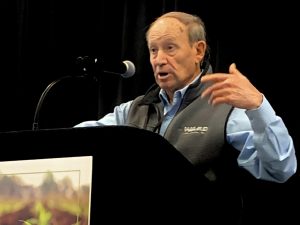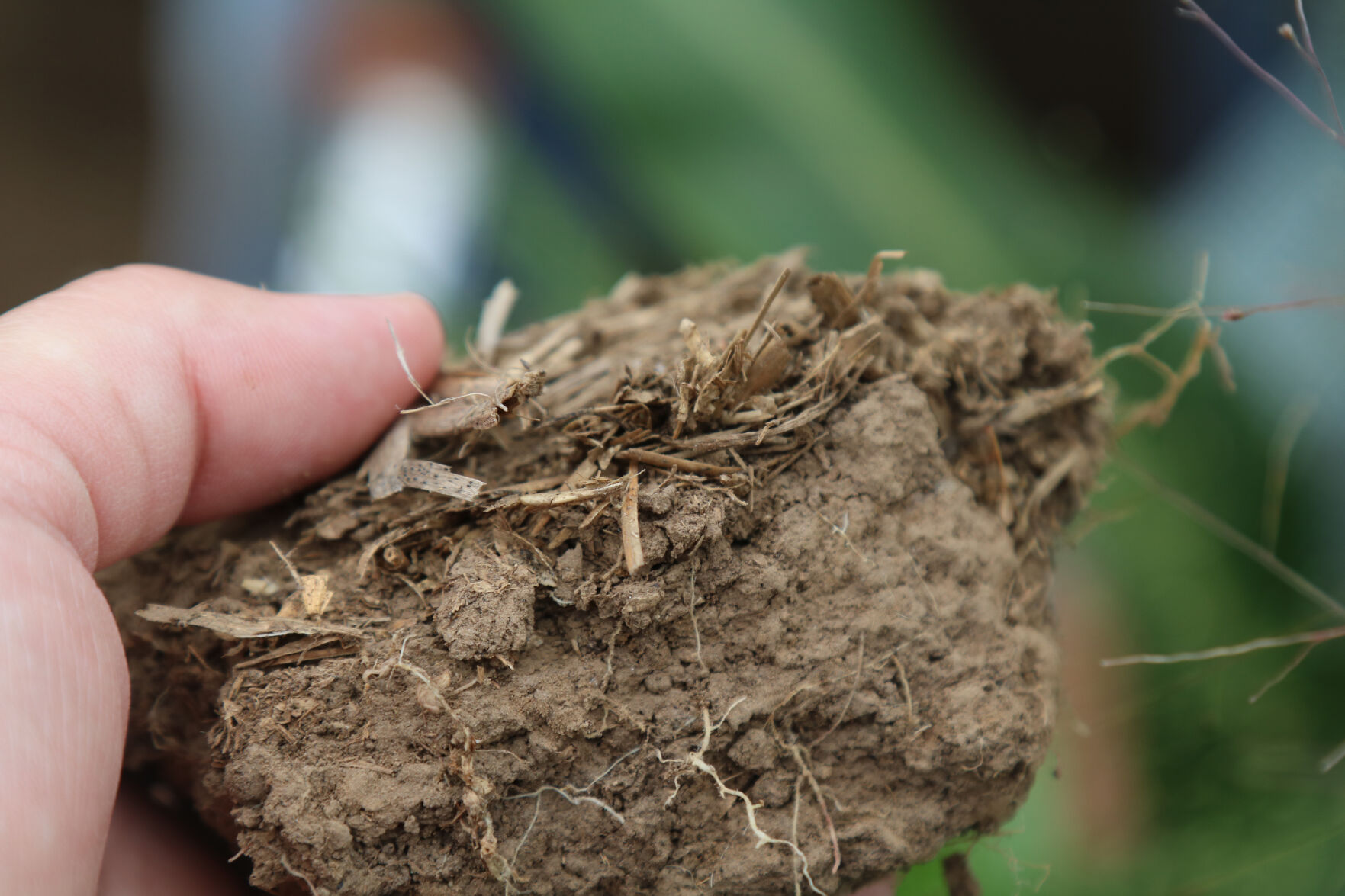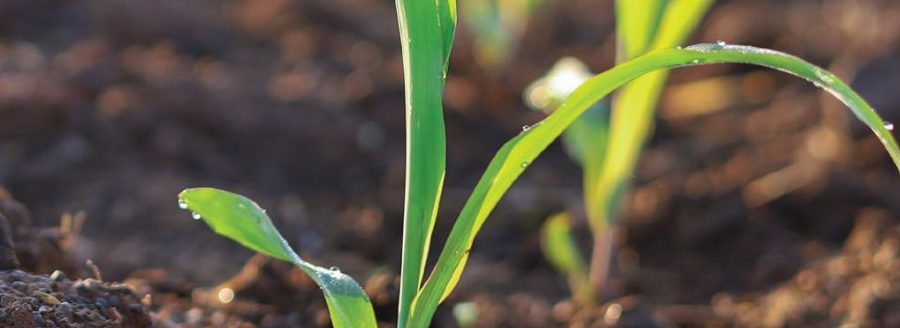A delicate balance is needed to keep soil functioning and viable, said Willie Pretorius, soil health consultant for Ward Laboratories, Kearney, Nebraska.

But in many cases, soil is not what it used to be.
“The soils we were provided by nature before farming on them were pristine and functioning completely with all the soil functions in place,” he told an audience at the Soil Health U & Trade Show in Salina, Kansas.
Thanks to the evolution of modern agriculture, Pretorius said, “we’ve ruined the soil life.”
His soil health gap analyzed and quantified “the extent of commercial crop production practices against the original, non-cultivated virgin status.”
The South African researcher showed what prairies looked like decades ago and “how ecosystems functioned with bison roaming around.”
There were lots of plants and grasses, with 5% to 7% of soil organic matter, good infiltration rates and the ability to store water, cycle nitrogen and other nutrients.
“Some of what’s left in the soil is not even 1% (organic matter),” Pretorius said. “If you want to produce nutritious crops and food, you are going to sway from nature, which is understandable, but don’t drive it to the point of no return.”
Soil does include residuals of “dead stuff,” such as silt, sand, clay, minerals, and organic material.
But those components cannot serve needs without “soil life” and the ability to absorb and hold water, “resist erosion, sequester carbon into a stable humus-like compound, house soil microbiota,” protect from disease, while providing and cycling nutrients.
The “textbook definition of soil,” he said, “is 45% minerals which accounts for more than sufficient mineral nutrients that can be provided to the plants by the microbial community as it happens in a stable ecosystem.”
He suggested to producers they let Mother Nature work her magic “as much as possible in your cropping systems.
“My interest is in finding ways to incorporate nature’s natural processes with as little human interaction as possible, to make use of the natural free services that are available to us,” Pretorius said. “These services are provided by soil microbiological communities working in teams and supported by the diverse species within a stable ecosystem.”
Soil’s ability to absorb and hold water is “through fungal and bacterial activities,” he said. “All the natural nutrient cycling processes were active making available—solubilizing—sufficient mineral nutrients from the non-available minerals that occur in all soils.”
“When microbiology is depleted, this huge free mineral resource is no longer available,” Pretorius wrote in a statement. “Modern agriculture has, through practices of tilling, monoculture and the application of excessive fertilizers, eroded the microbial life to such an extent that chemical inputs of fertilizers, insecticides, fungicides and herbicides have replaced the microbial communities with the consequence of spiraling soil degradation.”
When a healthy system is in place, all of the components are “living in association with each other. All are working together,” he said. “Nature is functioning without interference from man.
“You can’t put a value to stable soil.”
For those whose soil is sick, he said, “it’s possible to improve your soil from a degraded state. You can actually improve on the pristine state. I’ve seen it happen.”
Sign up for HPJ Insights
Our weekly newsletter delivers the latest news straight to your inbox including breaking news, our exclusive columns and much more.
Pretorius reminded attendees that “if it wasn’t for plant synthesis, we would not be here. It is the life-giving process. We owe our existence to six inches of topsoil and that it occasionally rains.”
Tim Unruh can be reached at [email protected].



